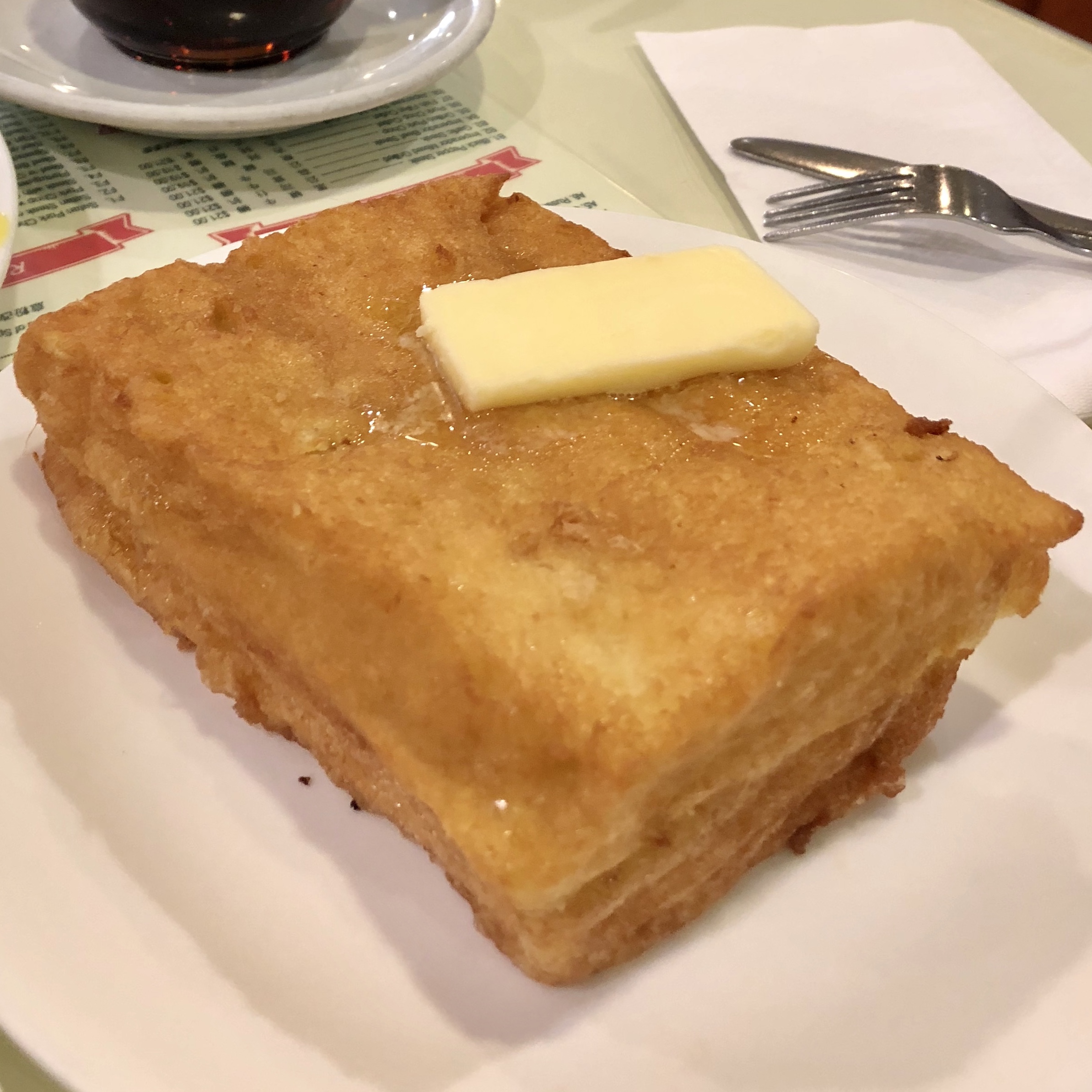Natalie Tan
Simmer Down, Issue #21
01.19.2021
bunz
My body is built on over 20 years of buns. Everything about them is imprinted onto me that merely seeing the canary glow of lights illuminating the window of a Chinese bakery triggers in me a Pavlovian response that moves my feet to the place where, when I open the door, the aroma that billows into my face reminds me of a notion of home unrestricted by geography.
The smell of a Chinese bakery is not simply that of bread, but rousing yeastiness supported by mellow tangzhong, rounded off with sweet sticky sugar glaze and an undertone of sesame, char siu, and scallion. It’s a fragrance (most likely) universally recognized as enjoyable, but is also one that reassures me that while I live halfway around the world in a place that doesn’t want me, I can always find familiar and welcoming locales.
Part I: THE BAKED BUN
When I visit a Chinese bakery, I engage in a practice embedded into me from a single-digit
age. I walk in, inhale deeply and step forward with a hand out, ready to grasp the edge of a
plastic tray that clacks as it glides off the top of the stack, while my other hand reaches for a
pair of hanging tongs. Being surrounded by cases of baked goods is thrilling; it’s a sight of
joy and a rare offer of choice where all signs point to pleasure.My go-to are sausage buns, either classic, with tender bread spiralled around a basic hot dog, or the deluxe variety, flattened and topped with mayonnaise, minced scallions, and cheddar cheese. Pineapple buns are a guaranteed good choice, their mildly sweet, dense bases are covered in a blanket of custard-tinted crumbly crust, all which can be accentuated at home by a slight heat in the microwave or oven, and a slice cut in the centre to accommodate a thick slab of cold butter. One of my oldest friends loves tuna buns, disc- shaped with a middle crater that cradles a dollop of tuna mayo. Baked buns are an unfailing example of harmony struck between stark sweet and savory. Amber and smooth, their globular exteriors carry a hint of sweetness, with a pillowy texture that strings apart when torn or deflates upon first bite, releasing air that perfumes the senses before you encounter strong flavours within.
Part II: THE STEAMED BUN
I always associate the white, filling-less mantou, either plain or strewn with scallions, with my paternal grandma–she is a mantou connoisseur. We always have a stash of them in our freezer, ready to be re-steamed before being taken to her. In 2012, when I suffered from life-altering acid reflux and lost my voice, my solo in my musical theatre programme’s Les Mis medley, and a potential audition with a director (I’m still not over it), mantou was one of the few foods that kept the fires of Mordor at bay. I felt fearful of the metallic sear I had come to know while carefully ripping apart plates of tiny, smooth, white buns and chewing them thoroughly, but the pain didn’t come, and I wondered if my grandma knew something I didn’t, of the soothing properties of a plain steamed bun.
PART III: WAI SIK
“For Chinese people and Hong Kong people, food is life. [...] We’re obsessive about it, we think about it, you know, 10 times a day, morning to night. And so when you’re talking about food, you are essentially talking about life,” The God of Cookery, Clarence Kwan, says to Sophia Roe in the first episode of Vice’s Counter Space. In Cantonese, we have a phrase, 為食 (wai sik), which means a devotion, an obsession with food. It’s intergenerational gluttony birthed from endlessly working hard, only for it to amass to the bare minimum, when slurping slick noodles from a roadside cart or buying a quarter of a bubble waffle was a grand reward for the smallest success. In my life, to be wai sik means to be enraptured by the taste of food, to tear through half a box of scallion crackers or a pound of fresh strawberries while sitting in front of the TV, to squish every hot steamed bun into my nose and place its parchment paper aside to be picked at later. It’s a belief that eating delicious food relieves inner turmoil for brief moments, that it resides at the centrepoint of all celebrations and relationships. It also means an inherent urge to care for your loved ones, to ensure that disappointing food isn’t added to an existence that is already far from satisfactory.
Buns are bought in bunches, leaving bakeries to sit on kitchen counters, box lids invitingly popped open. If they’re sweet, filled with coconut or custard or red bean, they satiate the 4pm snack wall. If they’re savory, with saucy char siu or chicken wrapped in a cloud-like white exterior, they’re lunch. Simple, quick, and filling, when they’re around, you will never go hungry.
I have this memory from when I was a kid, of my maternal grandpa handing me a huge white bun, me peeling off the paper bottom before ripping it open to reveal strings of veggies, bitter, dark and dull green. I’m pretty sure it’s a false recollection, one constructed by my brain to symbolize the care he always gave us wherein, while he never cooked, he was still always prepared to hand out mini Daim bars, salted plums, rolls of haw flakes, and perhaps even steamed buns from boxes.
